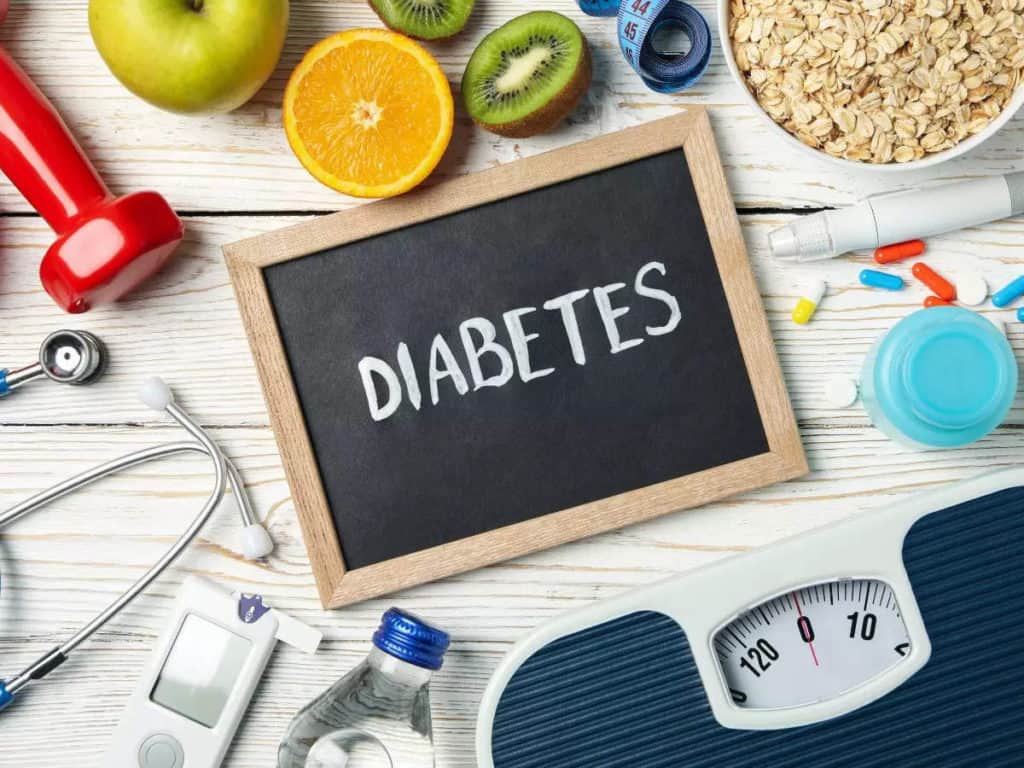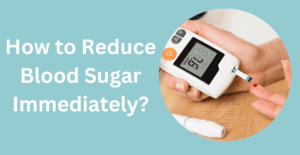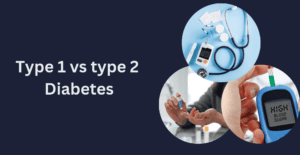Type 2 diabetes is a chronic condition that affects millions of people worldwide. It occurs when the body becomes resistant to insulin or when the pancreas is not able to produce enough insulin to regulate blood sugar levels. This leads to elevated blood sugar levels and an increased risk of serious health problems, such as heart disease, stroke, kidney disease, and nerve damage. Understanding the type 2 diabetes symptoms and type 2 diabetes causes is important for preventing and managing the condition. In this article, we will explore the most common type 2 diabetes symptoms of type 2 diabetes and type 2 diabetes causes that contribute to its development, including genetics, lifestyle habits, and environmental factors. By gaining a deeper understanding of type 2 diabetes causes and symptoms, we can take steps to reduce our risk and lead healthier, happier lives.
Symptoms of Type 2 Diabetes
Type 2 diabetes is a chronic condition that affects millions of people worldwide, and early detection and Diabetes Treatment are critical for preventing long-term health problems. Understanding the type 2 diabetes symptoms(symptoms of diabetes type 2 in adults) is important for prompt diagnosis and effective Diabetes Management of the condition.
- Increased thirst and frequent urination: One of the earliest signs of type 2 diabetes is increased thirst and the need to urinate more frequently, as the body tries to flush excess sugar from the bloodstream.
- Fatigue: People with type 2 diabetes often feel tired and fatigued, as the body is working harder to regulate blood sugar levels.
- Blurred vision: Elevated blood sugar levels can cause changes in vision, leading to blurred or cloudy vision.
- Slow-healing cuts and bruises: People with type 2 diabetes may experience slow healing of cuts, bruises, and infections, as high blood sugar levels can impact the body’s ability to heal itself.
- Numbness or tingling in the hands and feet: Over time, high blood sugar levels can damage the nerves, leading to numbness, tingling, or a burning sensation in the hands and feet.
- Hunger pangs: Despite eating regularly, people with type 2 diabetes may feel hungry due to their body’s inability to effectively use the sugar in their bloodstream.
- Dark skin patches: People with type 2 diabetes may develop dark, velvety patches of skin, especially in the folds and creases of the neck, armpits, and groin.
If you experience any of these type 2 diabetes symptoms(symptoms of diabetes type 2 in adults), it is important to speak with your doctor for prompt evaluation and treatment. By reading our Diabetes Blogs you can manage type 2 diabetes effectively, you can reduce your risk of serious health problems and lead a healthy, active life.
Causes Of Type 2 Diabetes
Type 2 diabetes is a metabolic condition in which the body becomes resistant to insulin and is unable to effectively regulate blood sugar levels. The condition can lead to a variety of complications, including heart disease, stroke, and kidney failure. While genetics play a role in the development of type 2 diabetes, there are several lifestyle and environmental factors that contribute to its development.
- Obesity: Type 2 diabetes causes excess body fat, particularly around the waist, which can increase insulin resistance.
- Physical Inactivity: Type 2 diabetes causes a sedentary lifestyle. Regular physical activity can help maintain a healthy weight and improve insulin sensitivity.
- Poor diet: Type 2 diabetes causes when someone intakes a diet high in added sugars, processed foods, and unhealthy fats. Eating Diabetes Recipes shall help combat this.
- Stress: Chronic stress has been linked to an increased risk of type 2 diabetes causes, as stress hormones can increase insulin resistance and disrupt glucose metabolism.
- Sleep disorders: Lack of sleep or poor sleep patterns have been linked to an increased risk of type 2 diabetes causes. Chronic sleep deprivation can lead to hormonal imbalances and insulin resistance.
- Smoking: Smoking has been linked to an increased risk of type 2 diabetes causes, as it can cause oxidative stress, disrupt glucose metabolism, and increase insulin resistance.
- Age: The risk of developing type 2 diabetes causes increases with age, particularly after the age of 45.
- Family history: A family history of type 2 diabetes causes can increase an individual’s risk of developing the condition.
- Ethnicity: Certain ethnic populations, such as African Americans, Hispanics, and Native Americans, are at a higher risk of developing type 2 diabetes causes.
What causes type 2 diabetes is a complex interplay between genetic and lifestyle factors. Being overweight or obese, having a sedentary lifestyle, and having a family history of the disease are all known risk factors for developing type 2 diabetes. Poor diet, particularly a diet high in processed and sugary foods, can also increase the risk of developing what causes type 2 diabetes. In those with type 2 diabetes, the body becomes resistant to insulin, the hormone that regulates blood sugar, and the pancreas is unable to produce enough insulin to compensate, leading to high blood sugar levels. This long-term elevation in blood sugar levels can cause serious health complications, such as heart disease, stroke, and kidney disease. It is important to understand what causes type 2 diabetes in order to make lifestyle changes and manage blood sugar levels to reduce the risk of developing this serious health condition. Maintaining a healthy weight, being physically active, and eating a balanced diet can help prevent what causes type 2 diabetes. Understanding what causes type 2 diabetes and making necessary lifestyle changes can lead to better health outcomes.
When To See A Doctor For Type 2 Diabetes
If you have any type 2 diabetes symptoms, it’s important to see a doctor promptly. Some of the common type 2 diabetes symptoms include:
- Increased thirst and frequent urination
- Extreme hunger, even after eating
- Unexpected weight loss
- Fatigue
- Blurred vision
- Slow-healing cuts or wounds
- Numbness or tingling in the hands and feet
- Recurrent infections
If you have any of these symptoms, or if you are at an increased risk for type 2 diabetes due to factors such as family history, obesity, or a sedentary lifestyle, it’s important to talk to your doctor about getting a diabetes test at home. Early diagnosis and treatment of what causes type 2 diabetes can help prevent or delay the development of complications associated with type 2 diabetes.
Additionally, even if you do not have signs of type 2 diabetes, it is recommended to get checked for type 2 diabetes at least once every three years if you are over the age of 45, overweight, or have other risk factors. Early detection and treatment can prevent or delay the onset of symptoms of diabetes type 2 in adults and reduce the risk of long-term health problems. Read about science of diabetes.
What are the risk factors associated with Type 2 Diabetes?
Type 2 diabetes is a metabolic condition that can lead to a variety of health problems if left untreated. The following are some of the risk factors associated with the development of type 2 diabetes causes:
- Obesity: Excess body fat, particularly around the waist, increases insulin resistance and increases the risk of developing type 2 diabetes.
- Physical Inactivity: A sedentary lifestyle can increase the risk of type 2 diabetes by reducing insulin sensitivity and promoting weight gain.
- Poor diet: A diet high in added sugars, unhealthy fats, and processed foods can increase the risk of type 2 diabetes by promoting insulin resistance and weight gain.
- Age: The risk of developing type 2 diabetes increases with age, particularly after the age of 45.
- Family history: A family history of type 2 diabetes increases the risk of developing the condition.
- Ethnicity: Certain ethnic populations, such as African Americans, Hispanics, and Native Americans, have a higher risk of developing type 2 diabetes.
- History of gestational diabetes: Women who have had gestational diabetes during pregnancy are at an increased risk of developing type 2 diabetes later in life.
- Polycystic Ovary Syndrome (PCOS): Women with PCOS are at an increased risk of developing type 2 diabetes due to insulin resistance.
- Impaired glucose tolerance: Individuals with impaired glucose tolerance are at an increased risk of developing type 2 diabetes.
- High blood pressure: High blood pressure increases the risk of developing type 2 diabetes and cardiovascular disease.
It’s important to note that not all individuals with risk factors will develop type 2 diabetes, and many individuals with type 2 diabetes do not have any known signs of type 2 diabetes. However, individuals with risk factors should talk to their doctor about their risk and the potential for screening and preventive measures. By maintaining a healthy lifestyle, including a balanced diet and regular physical activity, individuals can reduce their risk of developing type 2 diabetes. Become our next Diabetes Success Story!
The Bottom Line
Type 2 diabetes is a metabolic condition in which the body becomes resistant to insulin and is unable to effectively regulate blood sugar levels. The risk factors associated with the development of what causes type 2 diabetes causes include obesity, physical inactivity, poor diet, age, family history, ethnicity, history of gestational diabetes, polycystic ovary syndrome, impaired glucose tolerance, and high blood pressure. It is important for individuals with risk factors to talk to their doctor about regular screening and preventive measures, and for everyone to maintain a healthy lifestyle, including a balanced diet and regular physical activity, to reduce the risk of developing type 2 diabetes. If you have know what causes type 2 diabetes or have type 2 diabetes symptoms, it is important to see a doctor promptly for a proper diagnosis and treatment plan. Read more about Type 1 Diabetes Vs Type 2 Diabetes!
Faqs
Can Type 2 diabetes symptoms appear suddenly?
It is possible for type 2 diabetes symptoms to appear suddenly, but it is more common for them to develop gradually over time. Some people may not experience any symptoms at all, and the condition may only be detected through routine blood tests. If you suspect you may have type 2 diabetes, it is important to speak with a healthcare provider for proper diagnosis and treatment.
What are the Early Signs and Symptoms of Type 2 Diabetes?
The early signs of type 2 diabetes and type 2 diabetes symptoms can include:
- Increased thirst and frequent urination
- Extreme hunger
- Fatigue
- Blurred vision
- Slow-healing cuts or sores
- Frequent infections
- Dark, velvety patches of skin (especially in the folds and creases of your body)
- Numbness or tingling in your hands and feet
What are the common symptoms of Type 2 Diabetes?
The common type 2 diabetes symptoms include:
- Increased thirst and frequent urination
- Extreme hunger
- Fatigue
- Blurred vision
- Slow-healing cuts or sores
- Frequent infections
- Dark, velvety patches of skin (especially in the folds and creases of your body)
- Numbness or tingling in your hands and feet
What are the warning signs of Type 2 Diabetes?
The warning signs of type 2 diabetes or type 2 diabetes symptoms include:
- Increased thirst and frequent urination
- Extreme hunger
- Fatigue
- Blurred vision
- Slow-healing cuts or sores
- Frequent infections
- Dark, velvety patches of skin (especially in the folds and creases of your body)
- Numbness or tingling in your hands and feet









